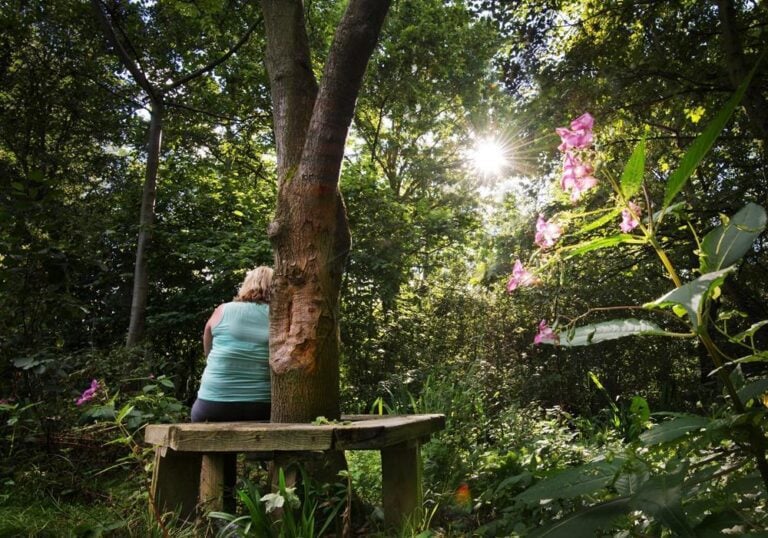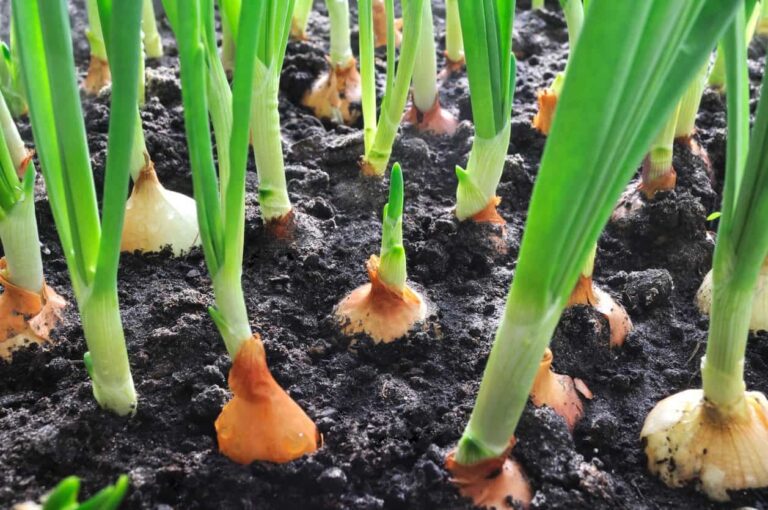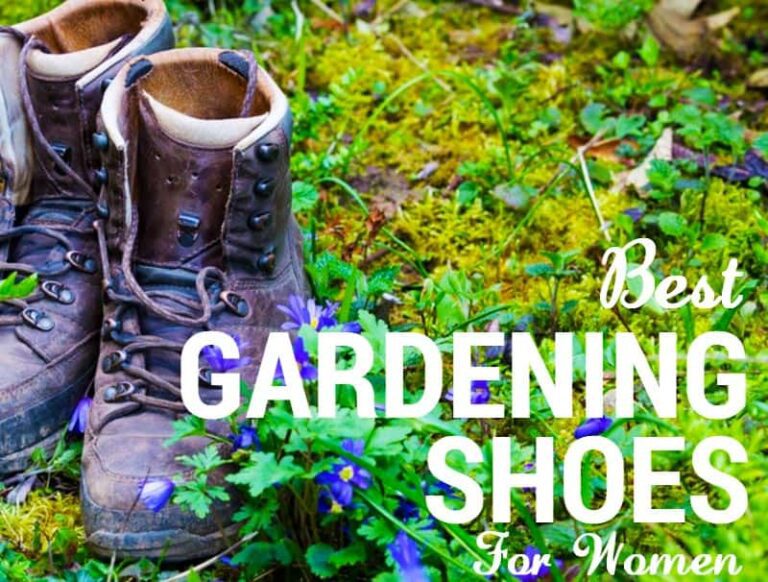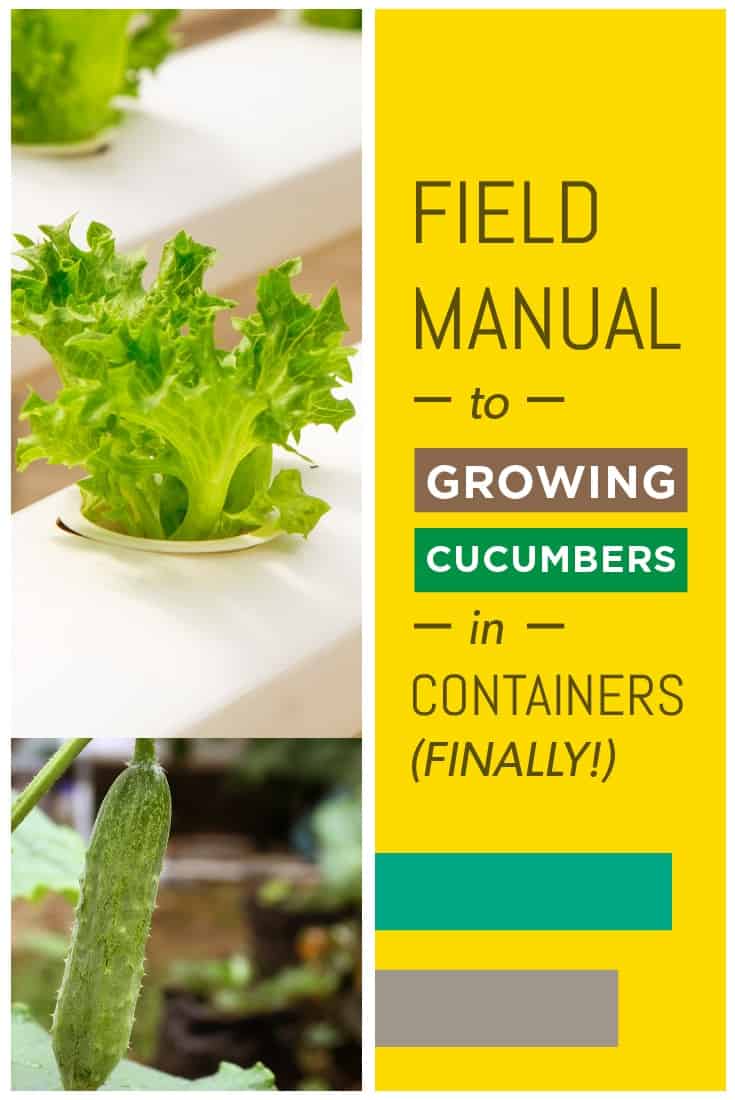A Beginner’s Guide To Planting A Vegetable Garden
A Step By Step Guide To Setting Up Your Very First Vegetable Garden
If you are lucky enough to have the space to start a vegetable garden at home then you have a lot of happy hours ahead of you.
Growing your own food in a vegetable garden gives you the opportunity to feed your family fresh food that you know is free of chemicals and pesticides. You can grow exactly what you want to eat and you can even try to grow things that are hard to get hold of in your area.

You will also notice that you can save yourself a lot of money during the Summer and Fall by growing your own food.
However, one of the best things about growing your own food is that you get to enjoy time outside and get to know nature a little bit better. Gardening can actually improve your mental health. We also love that your vegetable garden gives us the excuse to spend more time with our family.
Plus, there is nothing that brings us more pride than cooking up and eating food that we grew ourselves. Watching something turn from a seed into food is magical.
So, how do you set up a vegetable garden? Well, you need to mark out a plot, prepare the soil, and then think about what you are going to plant and when.
When you start looking into the process of setting up a vegetable garden you might find yourself getting a little overwhelmed. There are many different things you will need to do to get the best out of your garden.
But, if you are feeling that way then you have come to the right place. Today, we are going to take you through everything you need to do to set up your first vegetable garden. We will be explaining how to do each step and why it is important to get it right.
So, while you are learning how to set up your garden, it’s time to start thinking about what vegetables you want to plant first!
[toc]
The Basics of Growing a Vegetable Garden
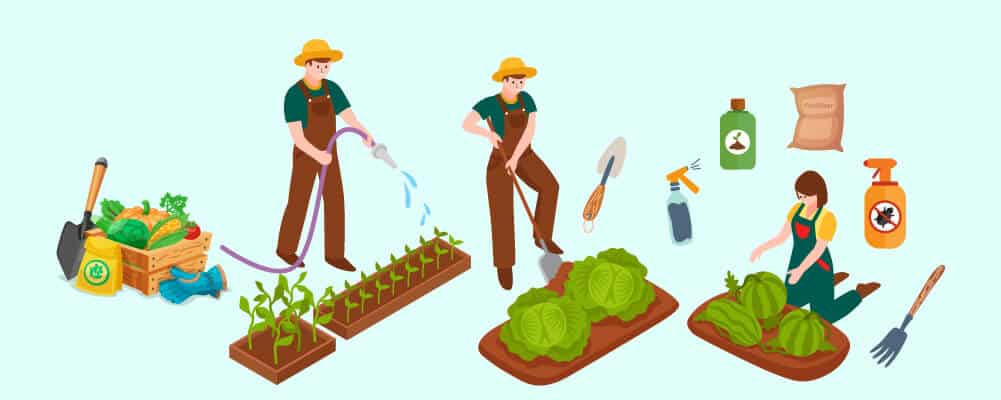
Over 42 million Americans garden regularly – some grow houseplants, others grow flowers, and a good few grow their own food. Gardening has so many benefits for us and the world around us that we are not surprised there are so many gardeners in this country.
We often get asked why we are so intent on teaching people how to grow their own food. We have many reasons for wanting to do this – but let’s start with the obvious one. Have you ever tasted vegetables that have been homegrown and cooked fresh?!
If that is not enough of a reason, let’s look at the other ways starting your own vegetable garden can benefit you and your family.
Access To Fresh Vegetables
If you live in certain parts of the country then you will understand the importance of eating fresh fruits and vegetables – because they are so hard to get hold of.
17.6 million Americas (and that is a conservative estimate) don’t have access to fresh fruit or vegetables for the majority of the year.
It is also worth noting, that over 90% of adults in America don’t eat enough fruit and vegetables, having them growing in your garden can change this. Grow your own and you can make sure that your family is eating healthily.
Reduce The Amount of Pesticides You Ingest
The pesticide laws in this country are very lax compared to the majority of the world. In fact, there are over 85 chemical pesticides that are banned in Europe and other developed countries that the USA still uses.
Farmers are allowed to use chemicals on our foods that other countries deem dangerous for humans (and many animals) to consume. When you grow your own food, you know exactly what has been used in the process.
You can also rest easy knowing that you are reducing the amount of wildlife-killing chemicals being used.
Improve Your Mental Health And Give Back To Your Community
The National Open Garden Scheme in the UK did a study on how our gardens affect our mental health. They discovered that 92% of people said that spending time in their garden improved their mental health and self-esteem. The study showed that even having one potted plant could make you happier.
Imagine what kind of impact a whole vegetable garden could have on you and your family?
You will also find that you make new friends when you start growing your own food. Having leftover vegetables also provides a great opportunity to donate fresh food to food banks or give it to your neighbors.
Spend More Time With Your Family
There is no better project to start with your family than to grow a vegetable garden together.
Vegetable gardens give you the opportunity to learn new skills as a family, the opportunity to talk about healthy life choices together, and to have a bit of fun outside together.
These skills that you are teaching your children will benefit them for the rest of their lives.
Welcome Wildlife Back Into Your Garden
The numbers of bees, butterflies, dragonflies, and other beautiful species of insects are on the decline and they have been for years. However, you can help to boost these populations again with your vegetable gardens.
While lawns look nice, they do not attract wildlife. However, flowering fruit and vegetable plants will. Bees and butterflies will be drawn to them and they will even pollinate them for you.
Tall, climbing plants will give wildlife places to rest while they are moving from garden to garden.
If you are growing berry bushes in your garden, why not leave a few berries there to help the local birds get through Winter.
The Steps
Here are the 5 you will need to take to create your first vegetable garden:
- Make your garden plan
- Choose your plants
- Design your plot
- Prepare your plot
- Plant your vegetables
- Maintain your garden
- Harvest the vegetables and enjoy
Today, we will be talking you through the first three stages. After that, the process will entirely depend on the plants that you are working with. Good luck!
A Beginner Garden Plan
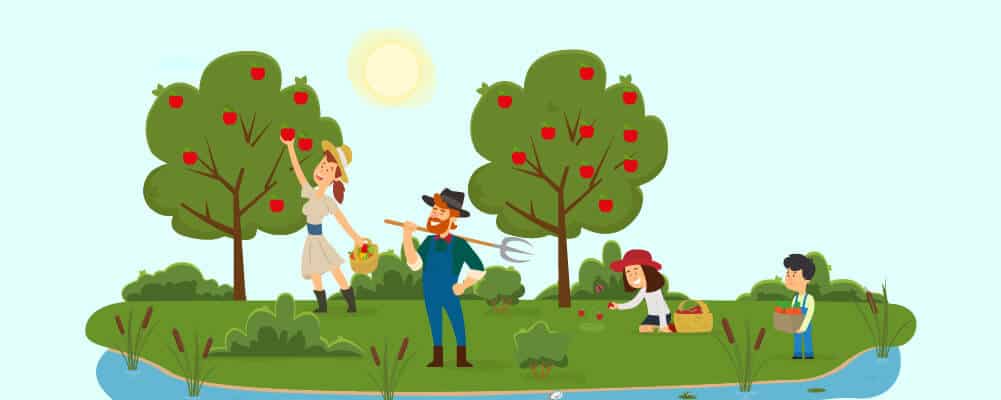
Before you even touch your trowel or plant a single seed, you need to take some time and put together a garden plan.
First-time gardeners or families that are making a vegetable garden together might want to consider sticking with vegetables and fruits that are easy to grow in your area. We have a section on our top recommendations later in the article.
A garden plan is simply marking out what space you want to dedicate to each plant in your gardening plot. Check out these 6 tips below that will help you to get the most out of your space.
#1 – Make Space For Tender Plants
There are certain plants that only thrive in the best conditions. Plants like basil, tomato, and peppers are notoriously picky when it comes to conditions. They like to be warm, dry, and protected from the wind. If you don’t live in a hot climate you will need to think carefully about where you are going to put them.
So, when you are designing your plot, make sure that you reserve the sunniest parts for these tender plants and if you can, plant hardier and taller plants around them to keep them sheltered from the elements.
#2 – Find The Best Spot For Climbing And Roaming Plants
When it comes to climbing plants, you will either want to plant them at the back of your plot or in the middle. They will need a structure to climb up and you do not want to build that structure in a place that makes it difficult for you to get to the rest of the plot.
Roaming plants, on the other hand, need to be exclusively planted on the edge of your plot. Otherwise, their vines and leaves will smoother the rest of your vegetables.
#3 – Irrigation Is The Key To A Successful Garden
If you live in a hot and dry area then you will probably be able to skip over this section. However, if you live in any other climate you will need to consider how you will irrigate your plot. This is especially important to consider if you live in a rainy locale.
We recommend that you make raised beds to plant your vegetables in. This will give you an extra few feet of soil depth but it will also allow your plot to drain naturally and not become a quagmire after a few hours of rain.
#4 – Companion Planting
Companion planting allows you to harness the natural defenses of nature and use them to protect your vegetables. It’s not quite as dramatic as it sounds, but companion planting can save any gardener a lot of grief when it comes to pests.
When you companion plants, you create a collection of plants that thrive together and benefit each other. You can use tall plants to create shade for other plants. You can use herbs as natural pest control. You can use fast-growing plants to protect slow-growing plants from being attacked by weeds.
#5 – Consider Pest Control
When we were little, we decided that we were going to grow broccoli. We spent a few months propagating them inside until they were finally ready for the ground. After we planted them outside they were completely devoured by slugs overnight.
This still makes us really sad.
Pests are unavoidable when you garden but there are some non-harmful ways to keep them at bay. For example, slugs hate tomatoes and won’t go anywhere near them. Plant your leafy greens inside a tomato border and they will be safe.
You can also use tools like copper tape, salt, and wind chimes to scare off pests.
#6 – There Is Such A Thing As Too Many Plants
When you first create your vegetable garden, you will feel the urge to try and plant EVERYTHING. However, you have to resist.
Remember that the nutrients plants need to survive are finite and if there are too many plants competing for the same resources, they will all struggle to survive.
We recommend that you limit yourself to a few plants when you are first starting out. This will help you to build your gardening skill and prevent you from being overwhelmed by the project.
Each plant requires a different amount of space to thrive, you will have to factor this into your plans.
Vegetable Gardening: Getting Started
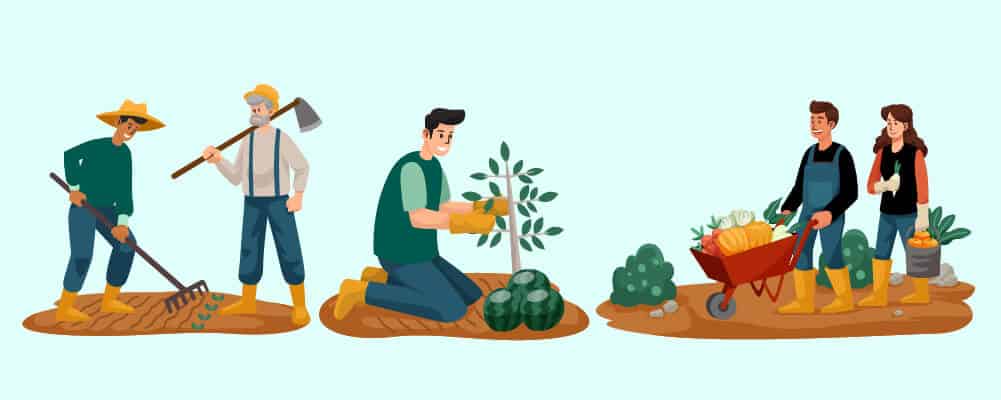
Before you start planting any vegetables in your garden, you need to make sure that it is set up in the best way possible.
The likelihood is that you won’t just be able to dig a hole in your lawn and plant a carrot. You will need to prepare the soil, choose the best place to set up your vegetable patch, and organize it in the most optimized way.
Let’s look at the four things you need to do to prepare your vegetable garden for planting.
Design Your Plot
Depending on the type of person you are, you will either love designing your plot or you will hate it and be desperate to start gardening as soon as possible. However, if you want to set yourself up for success then you are going to need to prepare properly.
You should start by looking at the space you have in your garden and work out where the best place to put your vegetable patch is.
You need to think about how you want to use the rest of your garden (for example, if you play a lot of football in your garden then you don’t want to put it in the middle of the “pitch”).
You want to look for an area in your garden that is fairly sheltered and gets a lot of sun. You should also try and look for an area that has free-draining soil.
Next, you need to decide how big you want your plot to be. Remember, it is best to start small in your first year and progressively get bigger. Think about what you want to plant and how much space you will need to do so. Work out roughly what size plot you will need.
Mark out this plot using something you have to hand – rocks, twigs, or even strips of tarpaulin.
Remove Weeds
Next, you will want to prepare the space.
Depending on where you are going to set up your vegetable garden, you will have a few different things you need to do.
If you are going to put it where there is currently a lawn then you will need to take the top layer of grass off before you do anything else.
If the area is overgrown with weeds or with other plants then you will need to pull them up. Make sure that you get rid of their root systems or they may grow back.
Once you have cleared the top layer of soil, you are going to want to dig it over. This will bring any unwanted items to the surface and make sure there are no nasty pests lurking in the soil.
Start With A Bit At A time
Preparing the ground can be a big task and there is no pressure to do it all in one day – especially if you are new to the world of gardening. Sometimes the digging can be hard work and you will need to spread the work over a couple of days.
Gardening is meant to be an enjoyable activity, so make sure that you do not put too many expectations on yourself or work too hard. Sometimes, gardens can feel like they have a mind of their own and they don’t like to work to our time frame and plans.
This even happens to those of us who have been gardening for a very long time.
Get The Soil Right
If you want to grow your own vegetables and fruits then you need to make sure that you are working with good quality soil.
Unless you are lucky enough to live out in the countryside, then it is most likely that you will need to add new nutrients back into your soil.
There are many different ways you can do this. The simplest way is to mix vegetable waste into your soil and leave it for a few weeks to break down.
You can also buy premade compost to mix into your vegetable patch – or you can buy liquid soil food that will help the soil to build its nutrient levels back up.
You want your soil to be as nutrient dense as possible so that your plants do not have to compete with each other for resources.
Vegetable Gardening for Beginners – Choosing Vegetables
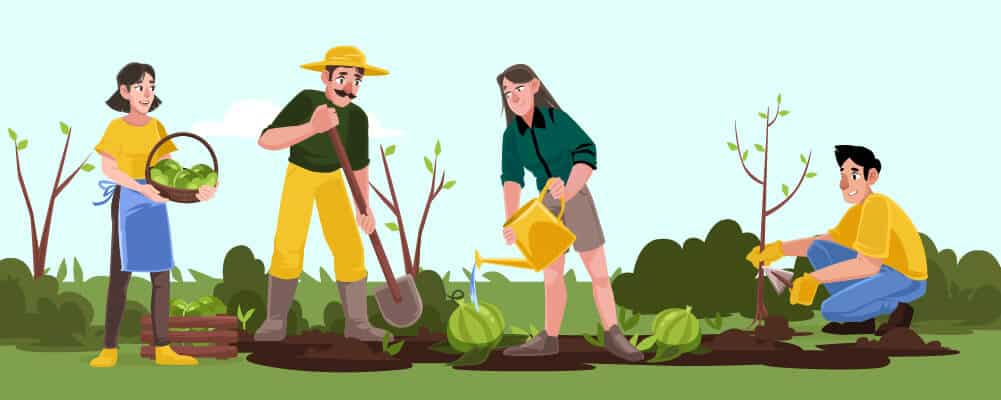
Now that we have looked at how to set up your vegetable garden, let’s take a deeper look at planning vegetables.
Some vegetables are a lot easier to grow than others and you will have your own favorites as well. In this section, we will look at 6 different vegetables that are perfect for complete beginners to grow.
They are all vegetables that you will be able to find uses for in your cooking. After you have perfected growing these vegetables, you might want to look at starting a herb garden next year.
Where And When To Plant
When you look at a packet of seeds, you will notice that it contains details about the conditions that the vegetable needs to grow in, when to sow the seeds, and when to move them outside into the ground.
Keep all of this in mind, as it will help you grow to be more successful. For example, you do not want to plant every single seed you own at the same time. Some plants like to be planted in the winter. While others need to be planted into warm soil after the first frost.
If you do not have indoor space to propagate seedlings then you should find vegetables that can be planted straight into the ground.
Garlic
Garlic is a great option for beginners because it is very low maintenance and is very hard to kill. We love growing garlic because we use it all the time and it never goes to waste.
All you need to grow Garlic is a clove of Garlic. Go through your cupboard and pick the biggest clove for the best results.
Garlic is a winter plant, so you will need to make sure that you are planting it between October and January.
Read more about growing Garlic here.
Carrots
You can grow carrots from seeds or by using carrot tops.
Carrots grow deep underground, so you will need to make sure that the soil is not too shallow.
There are many different types of carrots other than the orange ones that we are used to. They can be planted between January and the end of April.
The carrots will grow in bunches and one seed can produce a lot of produce. So, bear this in mind, and don’t put too many seeds in the ground – unless you love carrots or have a horse to feed!
Read more about growing Carrots here.
Potatoes
Potatoes are another vegetable that you can grow from seed or by planting a potato straight into the ground. Like carrots, they grow deep in the ground, so make sure you have a deep enough plot for them.
There are a huge number of potato species – if you want to try growing something you have never eaten before then this can be a great place to start.
You should plant your potatoes in March and April to enjoy a Summer harvest and then again in September for Christmas and Thanksgiving harvests.
Some plants have edible leaves, potatoes do not! If you are gardening with your family, make sure your little ones do not eat these leaves.
Read more about growing Potatoes here.
Onions
If you are a first-time vegetable farmer then you are going to want to stick to Spring Onions and White Onions at first. Red Onions can be a little temperamental and need a more experienced hand to look after them.
Onions are a really easy plant to grow and you can plant them anytime between October and the end of April. You can plant them by putting a bulb in the ground or growing them from seed.
Read more about growing Onions here.
Tomatoes
Tomatoes are one of our favorite things to grow. There are hundreds of different types of tomatoes – all of which taste and look different.
Tomatoes also come with the added benefit of scaring away slugs. They are a great bush to plant throughout your vegetable plot to scare away these pests.
Tomatoes should be planted from seeds. They will need to spend a little bit of time growing on a window sill until before they are planted outside. When they start growing make sure to cut off the smaller leaves on their stems – this will mean they will grow more fruits.
Read more about growing Tomatoes here.
Gardening Tools
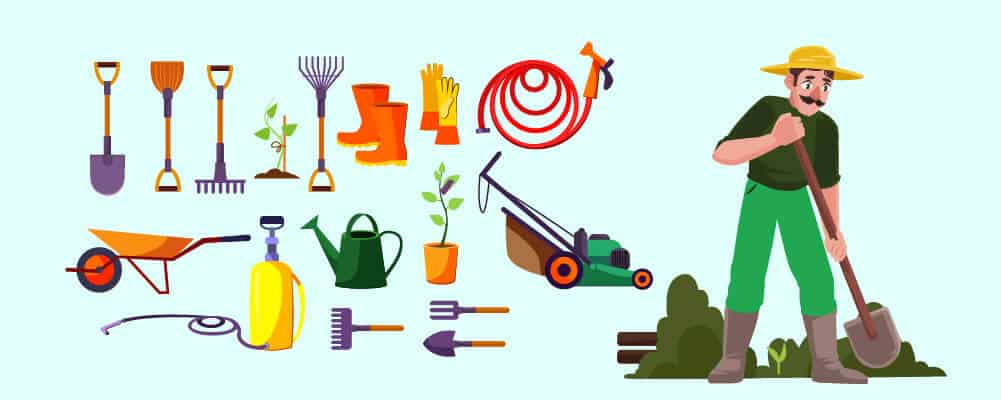
Before we leave you, we are going to talk you through 6 essential tools that you will need to set up your first vegetable garden.
We will be talking about trowels, shovels, garden designing software, and much more.
You will find that all of these tools will be incredibly useful throughout your gardening journey. So, they may be a little bit of an investment to buy at the beginning, but you will use them for years to come.
If you want to learn more about the world of gardening tools, then we have a whole section dedicated to them right here.
Garden Designing Tools
There was a time when you had to painstakingly draw out your plans for your gardens. This was especially difficult if you are like us and not very gifted in the drawing department.
Thankfully, there is now a whole range of tools online that you can use to help you design your garden. They don’t take away any of the fun or creativity – they just make the task a lot easier.
We love this tool, it is free and it will help you to make the most of your space – no matter how big or small it is.
Gardening Gloves
Gloves are an essential tool when you are gardening – you want to enjoy the process, you don’t want to injure yourself. You will also be very grateful for your gloves on days that are cold or wet.
We recommend that you purchase a thick set of cotton gloves. If you get a set that has very little plastic in them you will find that they last longer and you will be able to wash them if you put your hands in something unpleasant.
You want to make sure that they are thick enough to protect you but do allow you some finger mobility.
A Trusty Shovel
Human beings have been using shovels for over 14,000 years now. The oldest shovel found dates back to the Neolithic Era.
When you are starting to set up your vegetable garden – particularly when you are digging over your plot for the first time, you are going to want to make sure that you have a shovel you can rely on.
You should make sure that your shovel has a thick and sturdy shaft, preferably made from wood or metal. It needs to have a comfortable handle and the blade of the shovel needs to be sharp.
You should also look into getting a digging fork of the same size.
A Hand Trowel
Sometimes gardening requires a precision that you cannot get from a shovel – this is where your hand trowel will come in handy.
You will use this tool for moving soil from pot to pot, moving around seedlings, separating plants, and even removing weeds.
Again, you will want to make sure that you buy yourself a metal or wooden trowel, these will last you for a few decades.
You should also look into getting a hand digging fork and a garden kneeler.
Secateurs
Secateurs come in many different sizes, however, when you first start gardening you will only need a small pair. As nothing will grow fast enough for you to need a bigger pair – unless you are growing bamboo!
You will need a pair of secateurs when you are harvesting vegetables and fruit. But you will also need to use them throughout the year to prune your plants. A lot of plants thrive when you cut them back or remove some of their offshoots.
Some secateurs come with blades that you can sharpen while others come with blades you will need to replace. Bear this in mind when you are making this purchase.
Wheelbarrow
Finally, you should pick up a wheelbarrow.
Wheelbarrows were invented to make it easier to move heavy bags of soil, grains, and plant waste around a farm.
You will find the same uses for them in your vegetable garden. They are also useful for keeping delicate produce off the ground.
Beware, if your dog is anything like ours then they will love to be pushed around in the wheelbarrow!
A good quality wheelbarrow will help look after your back while you are moving heavy items around the garden.
Summary
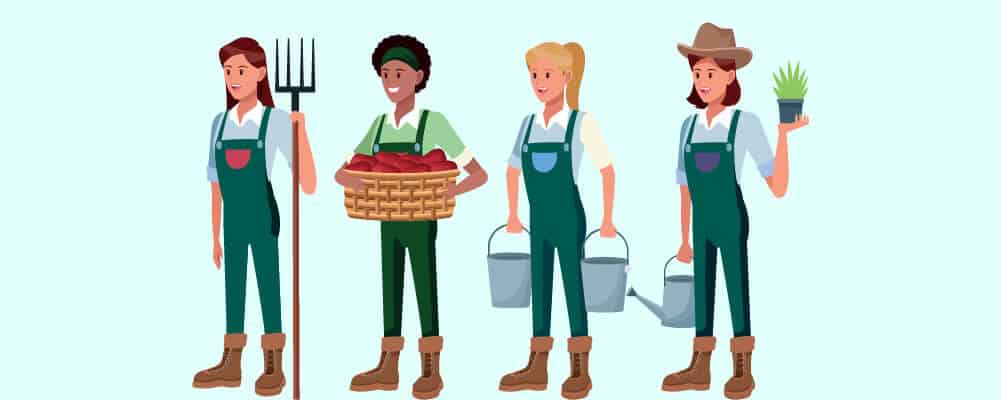
Starting your first vegetable garden can be an exciting adventure for you and your family.
You will be able to watch plants grow from tiny seeds to something you can eat. You will notice that your vegetable patch draws more wildlife into your garden, and you will also notice how the act of gardening can improve your mental health.
Nothing tastes better than the food you grow and cook yourself.
So, you want to be happier, save money, and eat food that is fresh and delicious – well what are you waiting for? It’s time to set up your vegetable garden!

